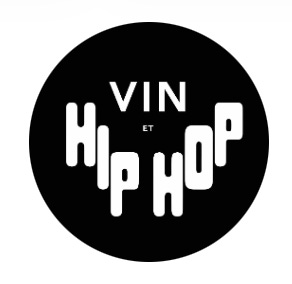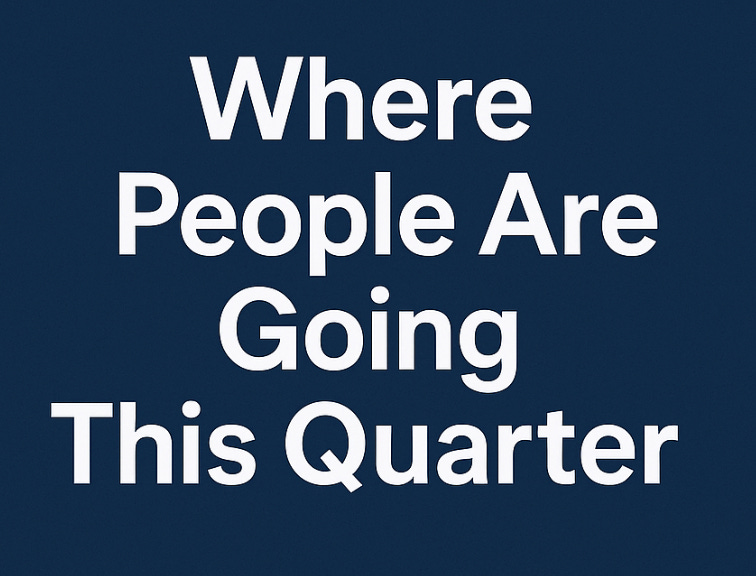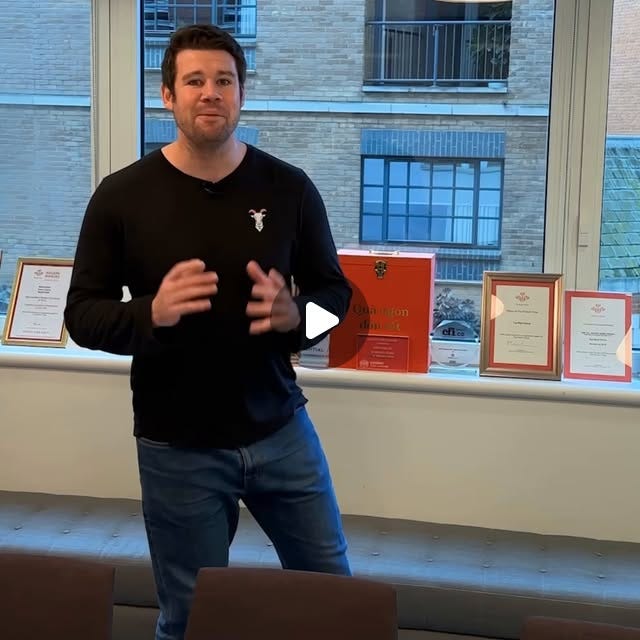The Confidential: Field Notes from Eventlandia
Vendelux’s new Power Index, Money20/20’s marketing brilliance, a $40K cautionary tale, the Event Venture Group builder’s bootc intelligence, field notes, and cultural cues from the live-event economy.
In this column:
THE POWER INDEX: Vendelux reveals who’s really holding the room this quarter.
TAKING A BOW: Inside Money20/20’s emotional marketing coup.
THE $40K SCAM: The pre-pandemic fraud that still haunts event pros.
WHAT’S WORTH WINNING: A survey on which awards matter.
THE BUILDERS ARE GATHERING: Freeman + Event Venture Group’s Event Builder Bootcamp.
THE KNIT CAP THAT WOULDN’T COME OFF: What a beanie says about belonging.
The Load-In: Notes from Eventlandia
Dateline: Puligny-Montrachet, Burgundy- The vines are stripped bare, the harvest is done. I’ve set up my laptop at a long wooden table, surrounded by a small parade of bottles — 2022 Domaine Rougier Chambolle-Musigny 1er Les Cras, bright and ambitious; 2023 Domaine des Croix Corton Les Grèves, young but already self-assured.
The wines are as talkative as my inbox. Messages are flying in from Porto, London, and Barcelona — dispatches from the ICCA Congress, Event Tech Live, and IBTM World. By month’s end, most of the global meetings trade will have passed through one of them.
Even here, Burgundy has found its way into the conversation. The Wine & Hip Hop Festival at Clos de Vougeot — profiled recently in The New York Times — has turned a medieval cellar into France’s most unlikely VIP room: DJs spinning under ths stars and sommeliers were translating terroir into rhyme.
The theme is convergence — old worlds adapting to new rhythms. It’s what connects Burgundy’s renaissance to the event industry’s current evolution. And nowhere is that evolution more visible than in the latest map of global gatherings.
The Power Index Behind the Velvet Rope
Each quarter, Vendelux releases what has quietly become the most influential ranking in the live-events business: a data-driven index revealing where influence truly flows. Not who posts the most, but who closes the most.
This season’s Power Index reads like a tour of ambition. At the top sits Money20/20 USA — fintech’s annual convergence of commerce and charisma. In the same Las Vegas orbit, HLTH USA turns healthcare into a high-gloss ecosystem, while ITC Vegas reminds everyone that even insurance can throw a proper party.
Technology still holds the mic. AWS re:Invent, Microsoft Ignite, and Dreamforce remain corporate pilgrimages disguised as conferences.
Across the Atlantic, Web Summit has completed its post-controversy rehabilitation in Lisbon, Gartner IT Symposium/Xpo continues to attract the decision-makers, and The AI Summit New York keeps testing the limits of the hype cycle. Global Gaming Expo (G2E), GITEX Global, EDUCAUSE, Advertising Week New York, TechCrunch Disrupt, AFP Annual Conference, and KubeCon + CloudNativeCon North America round out the second wave. SuiteWorld keeps the enterprise set disciplined, and Slush Helsinki proves that innovation doesn’t require sunlight.
What’s striking is not who made the list, but the precision of who did. The mega-expo era is waning. The rooms are smaller now, the guest lists sharper. The velvet rope no longer guards the keynote stage; it defines the invitation itself.
Taking a Bow: Money20/20’s Quiet Masterclass (We want to do more of this)
Among those top performers, Money20/20 USA stands apart for tone and control. President Tracey Davies, Head of Content Ian Horne, marketing chief Kathryn Frankson, and strategist Scarlett Sieber and all the team members involved who have turned what could have been a routine fintech conference into a cultural franchise. Their 2025 theme — Human × Machine — took a tired conversation about AI and replaced it with empathy. Event strategist Dahlia El Gazzar called it “emotional architecture.” The campaign film, the minimalist stage design, the pacing — all designed to make complexity feel human. Money20/20 didn’t chase spectacle; it engineered sincerity. In an industry addicted to scale, that restraint read as confidence. Editors Note: Send me any “Taking a Bow” moments that you are seeing to give credit where credit is due- send them to me at David@gatheringpoint.news.
The $40K Scam That Almost Grounded 80 Event Pros
Every industry has its ghost stories. This one is ours. Long before the pandemic, Liz Lathan and Nicole Osibodu — the duo who would later launch Club Ichi — were planning a small retreat for senior event professionals. It was meant to be a reset: phones down, egos off, ideas shared over long dinners.
Then an email arrived. A hacker had quietly slipped into the legitimate correspondence with the venue, inserting a final “wire transfer” request that looked entirely authentic. Within hours, $40,000 was gone, and dozens of planners found themselves stranded — not by weather, but by deceit.
When Skift Meetings reconstructed the incident years later in its Event Tech Almanac 2025, it read like a time capsule from a more trusting era — the last gasp before remote work and digital verification hardened the culture.
The irony still stings: the same professionals who design experiences built on trust fell victim to a breach of it. The moral endures. Verify everything. Every transfer. Every signature. Every final email.
What’s Worth Winning — Take the Survey
There’s been a quiet storm brewing in the events world — a debate over the real value of industry awards. It started with questions around Eventex and spiraled into a larger conversation: Which recognitions genuinely matter, and which are just marketing theater?
To move that conversation from speculation to substance, Kai Hattendorf, via his EventFUL newsletter, and I are collaborating on The Clean Recognition Survey — a brief, bias-free look at what credibility and recognition actually mean inside the modern events economy.
This isn’t about calling anyone out. It’s about clarity. We want to understand which awards and honors truly advance careers, validate work, and strengthen brands — and which simply decorate the feed.
Take a moment to add your voice. The Clean Recognition Survey →
The findings will be published jointly on GatheringPoint.News and EventFUL later this year. Because the real question isn’t who wins — it’s what’s worth winning.
The Builders Are Gathering
The live-events business has always been built on instinct — who you know, what you’ve seen, how fast you can turn an idea into something with a door, a ticket, and a pulse. But this winter, instinct is getting infrastructure.
On December 2, Event Venture Group and Freeman Company will open the doors of Freeman’s Alexandria headquarters for the inaugural Event Builder Bootcamp — a one-day strategy lab for people who don’t just work in events, but build them.
It’s being called a “bootcamp,” but the format feels closer to an accelerator and think tank. Attendance is capped. The day is structured for collision: founders, producers, and live-experience entrepreneurs sitting side by side, comparing notes on how to take an idea from concept to company. Think of it as a blueprint exchange for the next generation of event architects and a reinvention for the experienced hands.
Event Venture Group, founded to connect visionary event operators with capital, mentorship, and scalable infrastructure, isn’t another networking club. It’s a response to something deeper — the hunger among event founders to treat their ideas as durable businesses, not just one-off spectacles. Freeman Company, for its part, brings the credibility of an organization that has quietly powered more live moments than any other.
“The goal,” says one organizer, “is to shift the conversation from what we produce to what we own.”
In an industry that measures success in moments, the Bootcamp is betting on something rarer: longevity.
My Culture Moment that Could Be Behind the Times:
The Knit Cap That Wouldn’t Come Off
At a cooking class in Beaune last week, I watched a young woman politely decline to remove her knit cap when asked to check it. “It’s part of my look,” she said, smiling. It wasn’t defensive, just certain.
A few nights later, at dinner at the Comte de Puligny-Montrachet, another guest — well-dressed, clearly raised with manners — kept his on through the meal. Same posture, same quiet defiance.
It struck me that this wasn’t about etiquette anymore. It was semiotics. The beanie, once the emblem of laborers and sailors, has become a social signal — comfort as confidence. A generation fluent in authenticity is rewriting what respect looks like.
From New York to Berlin to Seoul, the knit cap has turned into the soft crown of quiet resistance: against formality, against performance, against the need to transform to belong. At events, it’s the perfect tell — a wearable manifesto that says: I came as myself.
For event professionals, it’s a small but potent reminder. Dress codes are no longer about compliance; they’re about consent. When someone keeps the beanie on, they’re not being careless. They’re telling you how they want to exist in the room.
If you want to understand the next era of gatherings, start there. Read the headspace before the headwear.
Curtain Call
The calendar tightens now — Porto, London, Barcelona — a sprint through the closing acts of 2025. Deals will be made, ideas traded, and the season will end as it began: with people trying, through every possible medium, to connect.
Here in Burgundy, the Corton in the glass has opened beautifully. The vines outside are still. The inbox, as usual, is not- tell me anything— David@Gatheringpoint.news
Filed from Puligny-Montrachet. Edited just before the next pour. Check out our library of stories that add humanity to our industry and inspiration for your next move. Subscribe and pass along the word. I am really have a blast creating this content and need as much input and ideas for stories as possible.








